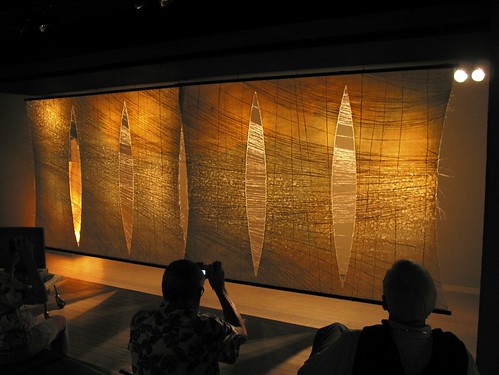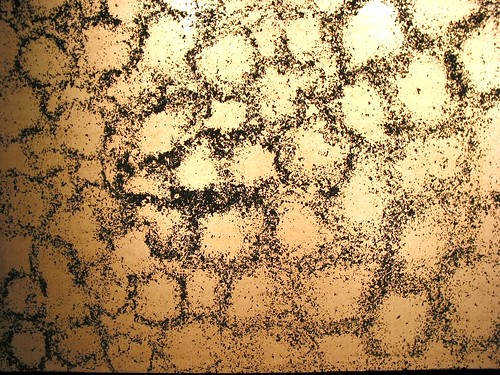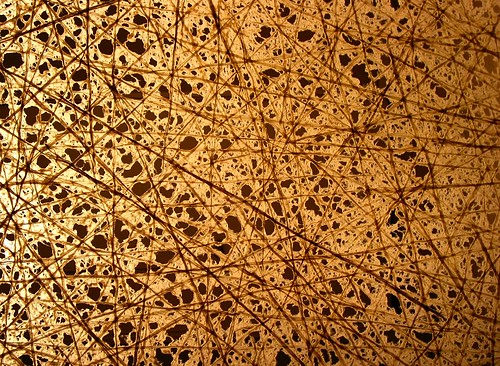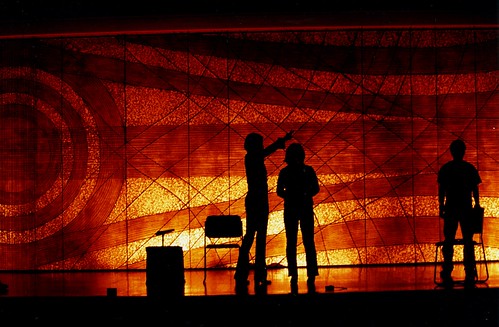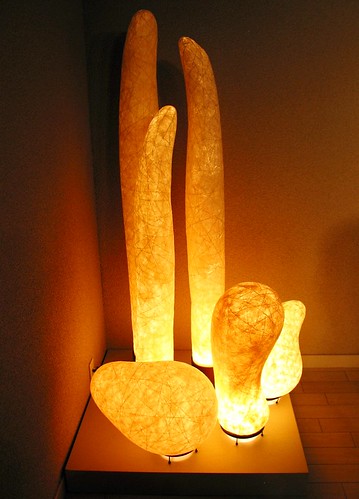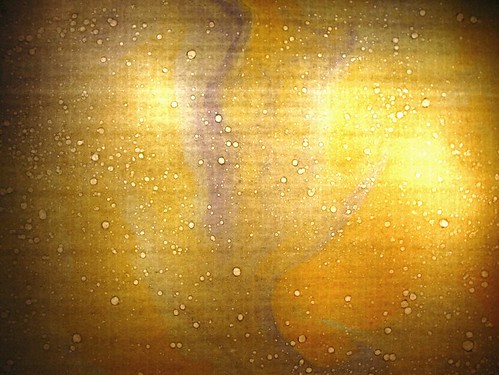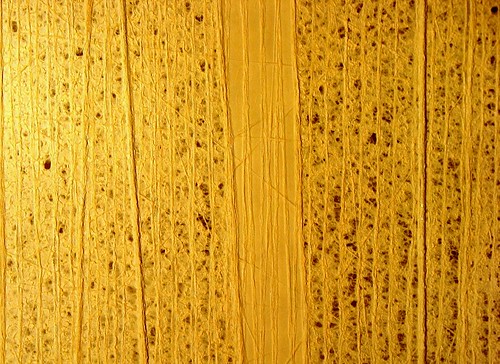Traditional handmade washi paper can be found everywhere in Japan, from name cards to beautiful wrapping paper. But washi as large format installation art, using paper tapestries up to 50 feet long, brings this ancient process to a new artistic level altogether.
HORIKI Eriko is one of Japan’s most successful contemporary artists. Her showroom and headquarters occupy a stunning, minimalist space in downtown Kyoto, on tree-lined Oike Blvd. Once you see one of her large-scale works, the concept of washi will never be the same. As Horiki slides one 15 foot long piece of washi art after another on ceiling tracks, the paper reveals snatches of its beauty: thin fibers creating delicate swirls around tiny bits of mulberry bark, long coarse strips of bark floating dramatically in what looks like churning whirlpools. Washi’s inherent beauty is enhanced by light, and as Horiki slowly shifts the light source from the front to the back of the piece, the fibers within the paper become illuminated and then disappear, creating an ethereal experience for the viewer.
It takes ten skilled workers to produce one of Horiki’s pieces – five artists and five craftsmen in an elaborate, almost choreographed operation. Horiki explains that washi can be created to specifically match any architectural need or function. However because the outcome cannot be completely controlled, nature is honored as a part of the collaborative process.

Horiki came from neither an art nor a craft background. After working for four years in banking, she moved to the accounting department of a company that specialized in developing products made from washi. She then came into contact with professional paper artisans in the washi town of Imadate in Fukui Prefecture. Becoming completely captivated by the workmanship of these craftsmen, she decided to devote herself to this paper production to help ensure that washi making skills handed down over 1500 years would be passed on to the next generation. Today you will find her works installed provocatively in restaurants, hotel lobbies, and public spaces throughout Japan, bringing drama and exceptional beauty to the surroundings.
One exciting project for Horiki was a collaboration with cellist Yo Yo Ma, a 45 foot long by 12 foot high single piece of washi that became the stage backdrop for his “Silk Road” concert tour. “Yo Yo Ma first found out about us when he saw our work here in Kyoto,” Horiki explained. “We talked about the traditional and innovative aspects of washi and new possibilities in music and stage decoration.” Her team worked to create a set embodying the essence of the Silk Road, the ancient Asian highway that connected peoples of many cultures from east to west. By using lighting techniques that corresponded to the music, the washi itself became an integral part of the concert.
Committed to excellence, energized by challenges, talented and hard working, Horiki Eriko is an inspiring example of how traditional Japanese crafts are being reinvented for the 21st century. Her art is also an example of how the exchange of ideas in our contemporary world influence and enrich one another’s artistic experiences.

